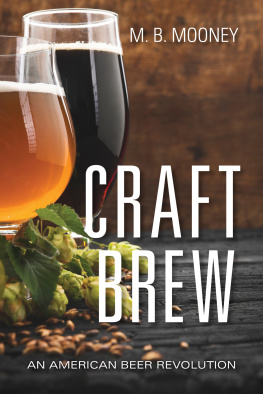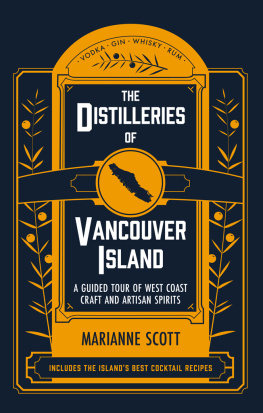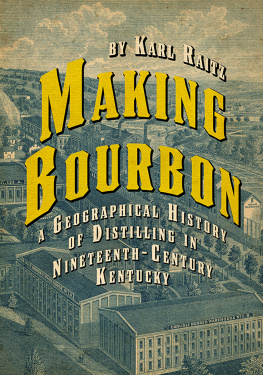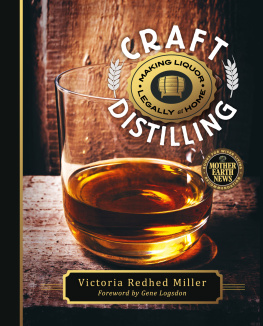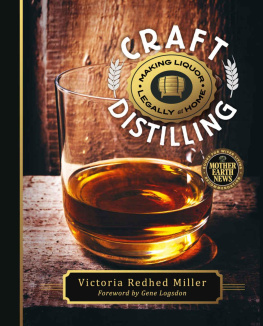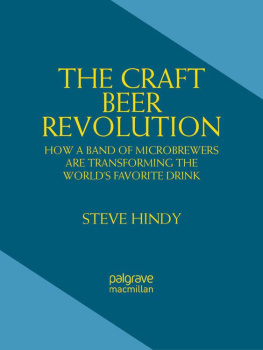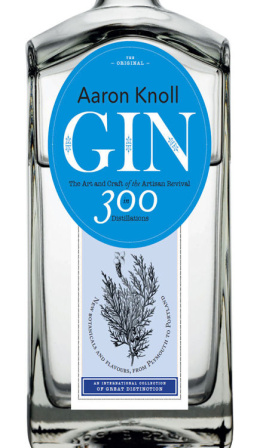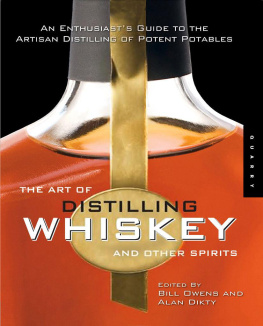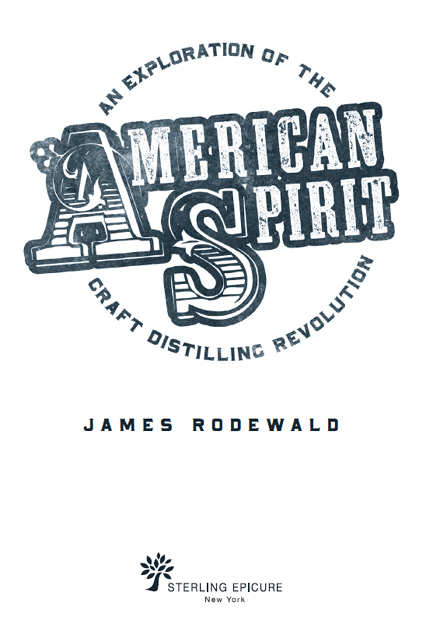STERLING EPICURE is a trademark of Sterling Publishing Co., Inc. The distinctive Sterling logo is a registered trademark of Sterling Publishing Co., Inc.
A complete list of picture credits appears at the back of the book.
All rights reserved. No part of this publication may be reproduced, stored in a retrieval system, or transmitted in any form or by any means (including electronic, mechanical, photocopying, recording, or otherwise) without prior written permission from the publisher.
Rodewald, James.
American spirit : an exploration of the craft distilling revolution / James Rodewald.
1. Distilleries--United States. 2. Liquors--United States. 3. Distilling industries--United States. I. Title.
For information about custom editions, special sales, and premium and corporate purchases, please contact Sterling Special Sales at 800-805-5489 or specialsales@sterlingpublishing.com.
FOREWORD
When America was very young, running a still was an element of smart farminggrain distilled into spirit doesnt spoil, its easier to transport, and its worth more at the market than the raw materials that went into it could ever be. Most of the early settlers came from nations with traditions of distillingthe Finns, the Germans, the Scotch Irish (The Scotch Irish!)and they got right to work cranking out rough spirit a barrel or two at a time. Hyper-local, small-scale distilling was the norm.
Alexander Hamilton tried to get all the distillers to pay tax, but it didnt really work. Mostly, the tax was simply ignored. It seems that it was really hard to convince someone to get on a horse and go around asking his neighbors to pay money (which they didnt have) for making spirits (which theyd always done) to something they couldnt see (the Feds). It wasnt a very popular idea.
During the halcyon decade that kicked off with Thomas Jeffersons repeal of the excise tax on whiskey, in 1802, before the debts incurred during the war of 1812 made those taxes necessary again, there were about 14,000 distilleries in America. Most of them made tiny amounts of booze.
Consolidation came with the dawning industrial age, and the burden of coming up with the cash to cover excise taxes contributed to the steady decline in the number of Americans making ardent spirits. In the years immediately before Prohibition, the number of American distilleries had dwindled into the hundreds. Still, there were hundreds. After Prohibition, there were perhaps a dozen.
And thats where the industry stayed for decades. When I was a wide-eyed youth wandering the aisles of my grandfathers liquor store, most if not all of the American labels I saw on the shelves were produced by some iteration of the same distilleries that had successfully weathered the Noble Experiment. Of course there had been takeovers, buyouts, and name changes, but I would suggest that in this context (with a few exceptions) the changes were almost superfluousjust the shifts of big business doing business.
Whats important to realize about the small group of industrial distillers that dominated the twentieth century is that they made (and those that are still in business still make) lots of different products. Today they spend a fair amount of time and money trying to make their products appear as if they were produced by the sorts of people who distilled things before Prohibition. They splash things on their labels like From the Birthplace of American Whiskey or Secret Family Olde Time Recipe or Crafted with Care in Snake Hollow. (None of these are real; they are meant to suggest, not to accuse.) Some of these claims have a tiny grain of truth, but mostly theyre marketing gimmicks. Although it looks as if the American spirits industry is comprised of many small businesses, each with its own label, it isnt true.
Twenty-five years ago, there were fewer Americans distilling spirits on a small scale than there were Americans milking their own yard cows and chopping down trees to build log cabins, which is to say, maybe three.
When I first started hanging around small distilleries, a couple of years before I met James Rodewald, there still werent very many of them. The scene was growing; new ones were opening every week, all over the country, but you could still wrap your head around the entirety of the industry with a few web searches and two phone calls. It was easy to find the key players and the good products.
Then things started to change. More distilleries open every year, and the number of entrants to the industry is increasing dramatically. For example, a report by Michael Kinstlick shows that in 2000, five small distillers entered the industry; in 2005, fifteen; and in 2010, there were more than forty-five. Id guess that in the fall of 2014 the number of small distillers in America hovers around 450.
Small-scale distilling resonates with our current cultural interest in authenticity and craft, and it seems to satisfy a desire, among a certain segment of our population, to work at something that isnt abstract, to actually make something.
While their predecessors, the craft brewers, had the advantage of producing something that was distinct and more flavorful than what Big Beer had offered, the distillers had no such edge. For the truth of the matter is that even if the industrial distillers might not have been exactly square about what they were makingit wasnt distilled six times according to an old family recipe from the birthplace of American whiskey, in other wordsit was delicious. Even if everything on the label should be understood as no more truthful than the claims made by Clark Stanley for his Snake Oil Liniment (The Strongest and Best Liniment Known for the Cure of All Pain and Lameness was touted as a cure for neuralgia, sciatica, and lumbago, among other things), it was still good. What was clear was that the small distillers had a chance to do something different. They could actually make little batches of liquor. These mavericks could reclaim an American tradition. They could work with farmers they knew, make something carefully and with intense attention, and sell it to people they also knewpeople they might run into at the bank, at the farmers market, at the diner.
Many took this pathartisanal, careful, and transparentbut the industry was soon split. A whole segment of the burgeoning industry got to work simply rebottling something that had been made at a large-scale distiller and calling it their own.
The dispute between these two factions has been the key issue, the central hang-up, in the craft-distilling world. I have seen, and participated in, the arguments, sometimes heated, over what constitutes a craft distiller. It has been the core issue, year after year, at every gathering, judging, and conference Ive attended. Ive seen cuts and gibes among the makers, and Ive sat at conference tables trying to figure out what, exactly, the industry as a whole is supposed to do about the fact that there are two distinctly different businesses lumped together under one tent.


